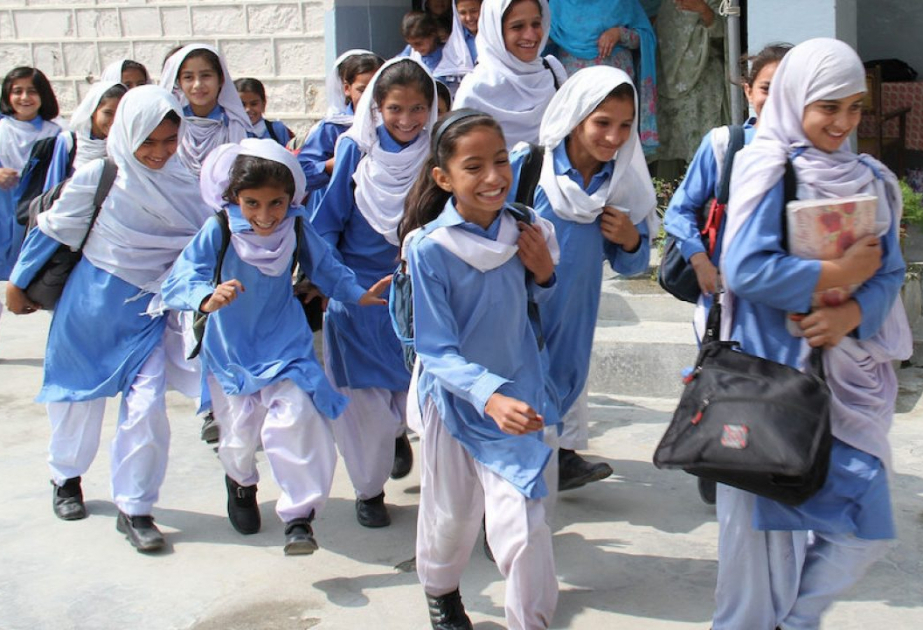Due to an ongoing heat wave brought on by the climate, Pakistan has temporarily closed schools in the majority of the nation in order to safeguard students from heatstroke and dehydration.
Save the Children said on Thursday that from May 25 to May 31, “at least 26 million children in Pakistan’s most populous province, Punjab, – or 52 percent of the country’s total number of pupils in pre-primary, primary, and secondary education – will be out of school.”
The Punjab Education Department closed all public and private schools in the province due to a temperature spike and an extended heat wave. Schools “will be permitted to conduct examinations as scheduled, with necessary precautions to ensure the safety of students,” the statement stated.
Major metropolitan doctors reported treating hundreds of heatstroke victims on Thursday.
The nation of South Asia, home to around 250 million people, has experienced disruptions in educational activities because of inclement weather before.
Due to irregular monsoon rains brought on by climate change, Pakistan’s southern and southwest areas saw terrible floods in 2022 that closed schools and affected 33 million people.
The climate coordinator for the prime minister, Rubina Khursheed Alam, stated during a press conference in Islamabad on Thursday that Pakistan is fifth among the nations most impacted by global warming. She mentioned the recent exceptionally high temperatures, floods, and rain.
According to Alam, a severe heat wave is affecting 26 districts in the provinces of Punjab, southern Sindh, and southwest Baluchistan. The heat wave is expected to last for at least a week.
She cautioned that the excessive heat and dry conditions could start forest fires and bush fires in areas that are sensitive, so she urged the public to drink plenty of water and avoid direct sunlight during peak heat hours.
With more than twice the typical monthly rainfall, this April was the wettest in Pakistan since 1961. Numerous people were killed and property and farms were destroyed.
Officials claim that as a result of climate change, temperatures in certain of Pakistan’s impacted areas have already approached 50 degrees Celsius (more than 127 degrees Fahrenheit).
According to representatives of the Meteorological Department, temperatures in Pakistan’s northwest and north would be “4-6 °C higher than normal” for the duration of the week.
Pakistan is primarily affected by climate change, although contributing less than 1% of the world’s carbon emissions.
According to Save the Children, Pakistan is expected to experience an increase in the frequency of extreme climate events, and the country is expected to experience rates of warming that are significantly higher than the global average, with a potential rise of 1.3°C–4.9°C by the 2090s.
At least 1,700 people died as a result of the floods in 2022, which also affected 33 million people and submerged about one-third of Pakistan.
After touring Pakistan’s flood-affected districts, U.N. Secretary-General Antonio Guterres declared, “Let’s stop sleepwalking towards the destruction of our planet by climate change.” Pakistanis, he claimed, were “facing the relentless impact of epochal levels of rain and flooding—a monsoon on steroids.”
According to the U.N. Children’s Fund, or UNICEF, on Sunday, temperatures in many of India’s northern states—including New Delhi—soared to 43–47 degrees Celsius.
“The soaring temperatures across South Asia can put millions of children’s health at risk if they are not protected or hydrated,” the organization warned in a statement.
According to UNICEF, 460 million children in South Asia, or 76% of all children under the age of 18, were exposed to intense heat, with at least 83 days a year surpassing 35 degrees Celsius. Compared to 24% of children worldwide, it was projected that 28% of children in South Asia experienced 4.5 or more heat waves year.


Comments are closed, but trackbacks and pingbacks are open.